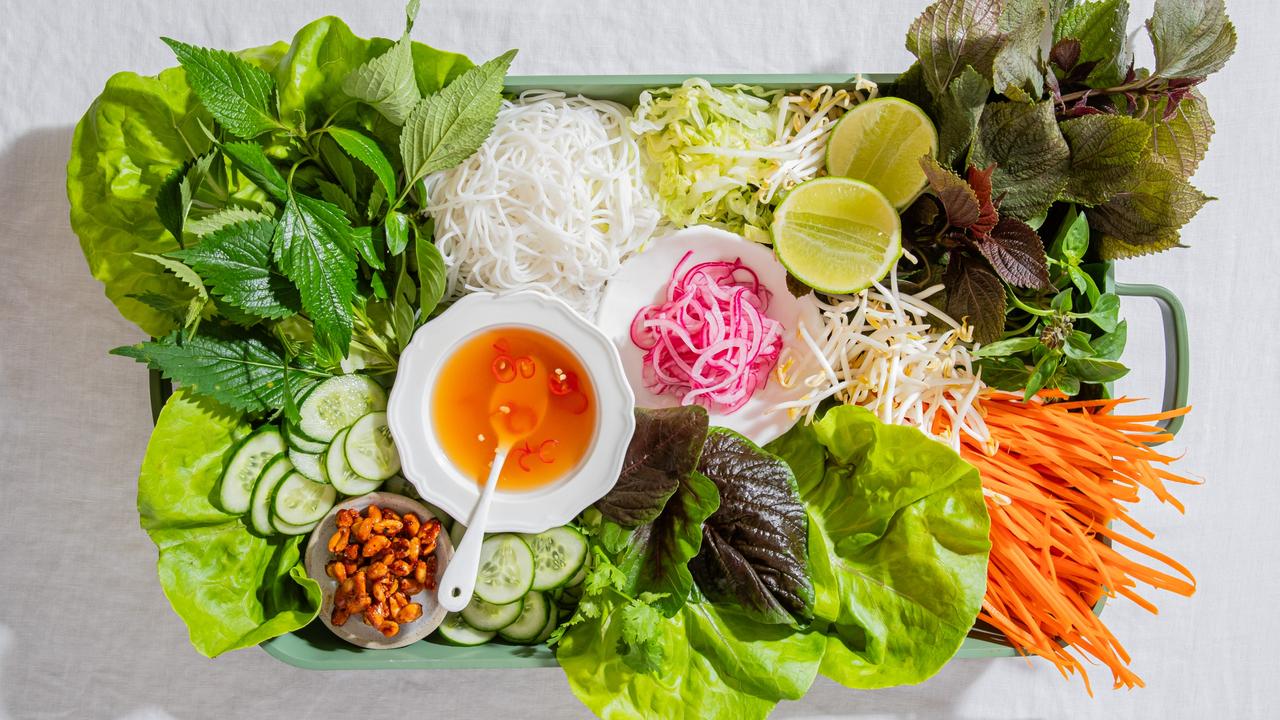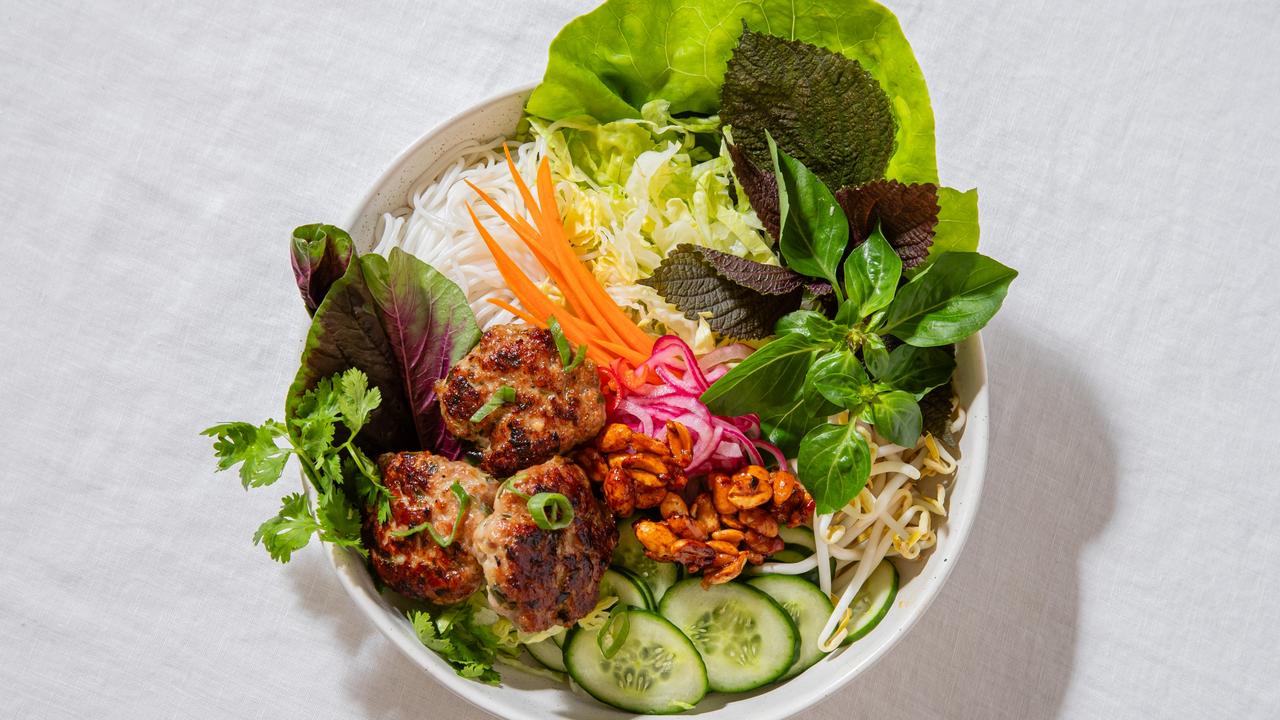Eumundi, Sunshine Coast hinterland, Qld
It’s a sanctuary for wildlife – and horses.
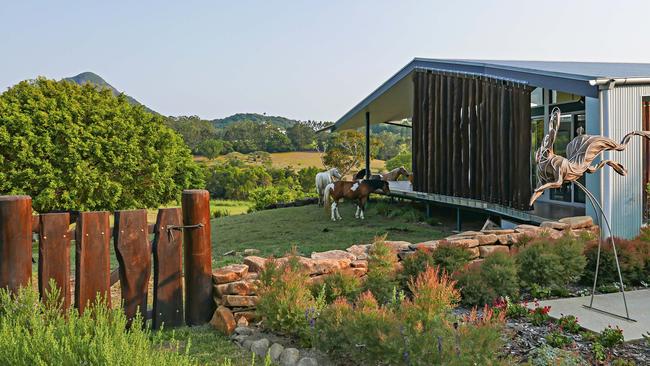
On her farm in Queensland’s Sunshine Coast hinterland, Lynn Scott is experimenting with alternative gardening ideas. Driven by a commitment to nurture local wildlife and vegetation, she is equally determined to help her property resist drought and fire.
After an exacting search, the former environmental geographer and her husband Ron bought the 30ha property in Eumundi in 2014 for their retirement. “Mt Cooroy towers over everything and we live on top of a little volcanic hill surrounded by paddocks, with a creek that runs all the way around us,” says Lynn. “I especially wanted a riparian zone where I could hear and see the birdlife.” Critically, it is a sanctuary for her small herd of horses, most of them rescues, to run free.
The Scotts built a simple, one-bedroom home that was architect-designed not only to capture the view and lifestyle they wanted, but also to allow the horses access to the verandas that surround it. “We wake to the joy of horses staring into the bedroom,” says Lynn. There are no wire fences; Lynn is exploring alternatives such as wetland sedge (Ghania) that keeps the horses out of the creek and provides habitat for frogs, bandicoots, birds and snakes. Near the house, simple lillypilly hedging helps manage horses’ access.
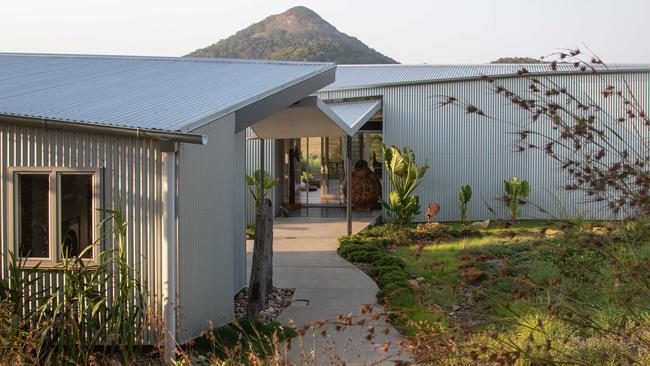
The garden is just two years old but Lynn is working on two major landscaping concepts. She describes the first as integration of pasture management with corridors and mosaic plantings of native vegetation. “I chose to not just replant the original rainforest but to work with the birds, insects and wildlife that cohabit the farm now,” she explains.
“The small wildlife need shrub shelter to survive, not canopy trees, so I have mosaics of sedges, grasses and rare wallum plants like Emu Mountain sheoak (Allocasuarina emuina) and conesticks (Petrophile shirleyae). Additionally, I provide a seed and plant bank for the endangered ecosystems being cleared for Noosa housing estates.”
She also nurtures specific plants for wildlife such as Monarch butterflies, migratory Latham’s snipes and pale-headed rosellas.
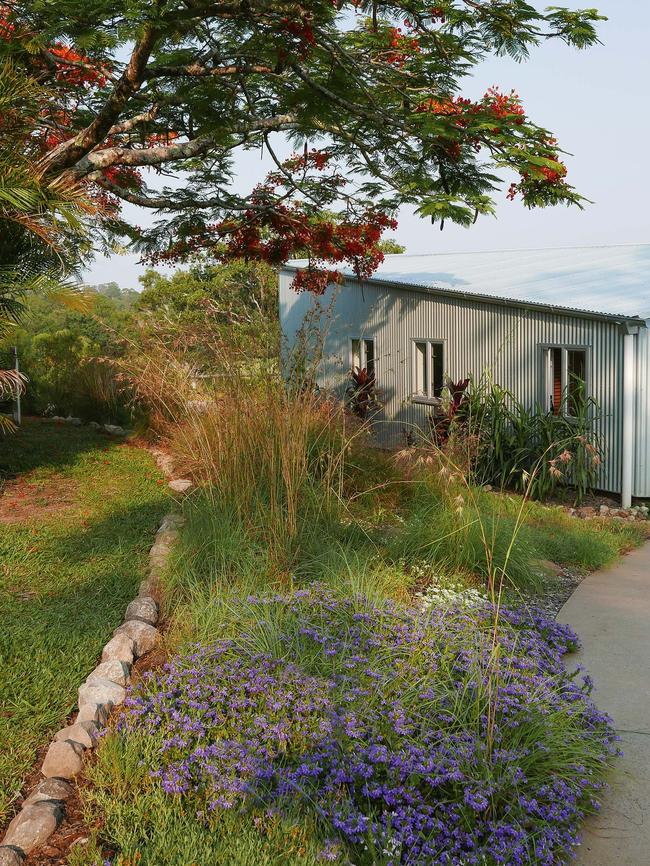
Exotic flowers have a place too, for colour and the European bees that have natural hives in the large fig trees nearby. Lynn maintains the rainforest garden the previous owners created under these trees “out of respect for the property’s history”. For the same reason she kept the 1918 cottage, now a guest house for family and friends. Throughout the garden are sculptures of animals on the property, which the couple commission directly from artists.
Lynn’s second line of experiment is based on her observations of how wild plants grow in communities. Having started with flowing garden beds and mass plantings, she now lets many of the native plants such as emu foot (Cullen tenax), fan flower (Scaevola), yellow buttons (Chrysocephalum) and ruby saltbush (Enchylaena) “expand their territory” as they self-seed.
“The rare native begonia died in a display bed but thrived when allowed to grow in between kangaroo grass. Our weeding program now targets only undesirable weeds,” she says. “It takes self control to stop one’s desire for order but I’ve learnt to find pleasure and visual wonder in what nature creates. And I’m too old to be a slave to the garden,” she laughs.
Our small sunroom has north-facing tinted glass doors. Would indoor plants behind the doors get enough photosynthesis? John Zambon, Stanthorpe, Qld
Plants need energy from sunlight for photosynthesis, the process where carbon dioxide and water are converted to sugars and oxygen using chlorophyll. The best indoor plants are those already adapted to do this in low light – often they have leaves with a large surface area to capture light. If the spot is bright enough to cast a shadow, that’s good light, but even this will change seasonally. Light intensity drops rapidly as you move away, even 30cm, from the light source. Symptoms of insufficient light are “stretched” or leggy plants, pale or small leaves, and lack of growth and flowering.
How do I de-thatch my kikuyu lawn? It has 25-35mm of brown roots under the green blades. Craig Gumley, Perth To remove the thick build-up of dead leaves and stolons, you can use a thatching rake, hire a lawn scarifying machine or scalp the lawn to the roots by using the lowest setting on your mower; this last might take several passes. The best time is late October to early December. Afterwards, apply a soil wetting agent, lawn fertiliser and water.
I moved a sickly fig tree when we came here three years ago. It’s now flourishing but why doesn’t it bear any fruit? It gets some shade in the morning and is 1.5m tall. Jenny Parker, Launceston When struggling trees are suddenly given good growing conditions, they often put all energy into growing a good structure and canopy. They should settle to fruit production after two or three years. However, figs love ample sun and heat; in cool Tasmania they need a sheltered hot spot.
Send your questions to: helenyoungtwig@gmail.com or Helen Young, PO Box 3098, Willoughby North, NSW 2068. Website: helenyoung.com.au. The best question for February wins a Composta, the Australian made and designed worm farm and garden in one, worth $119 from composta.com.au.


